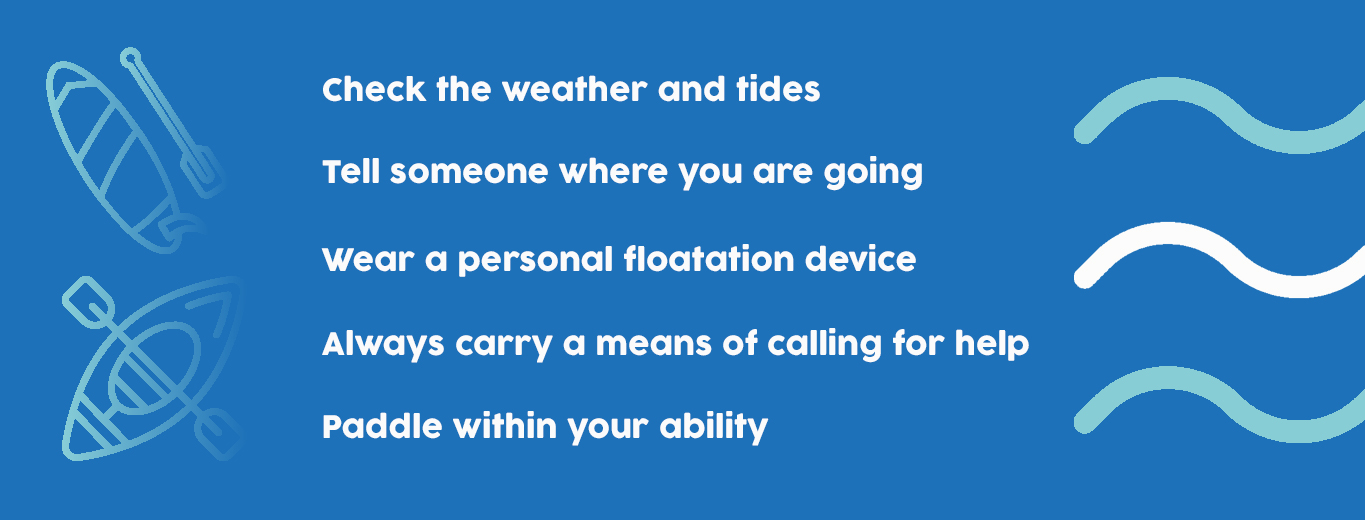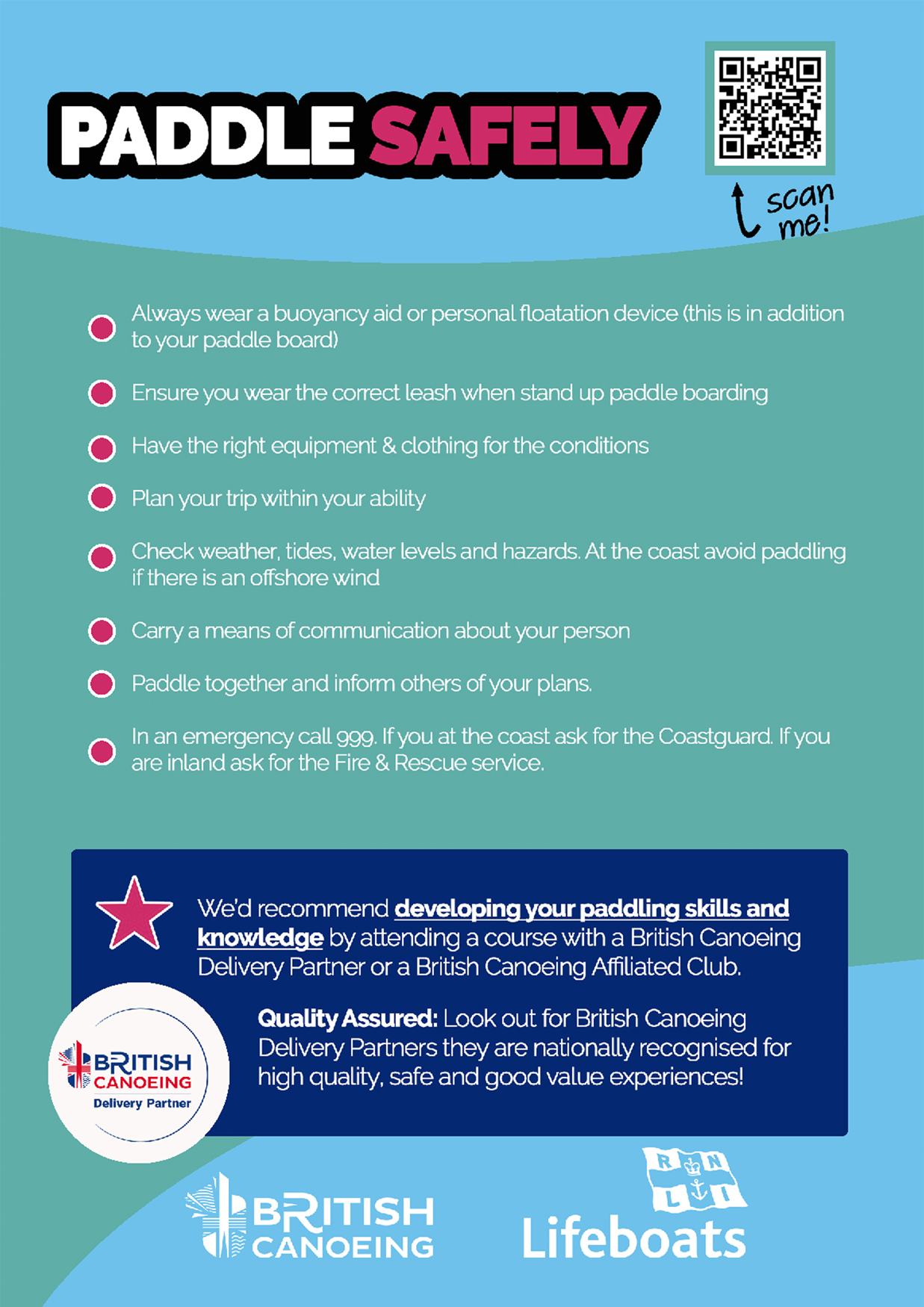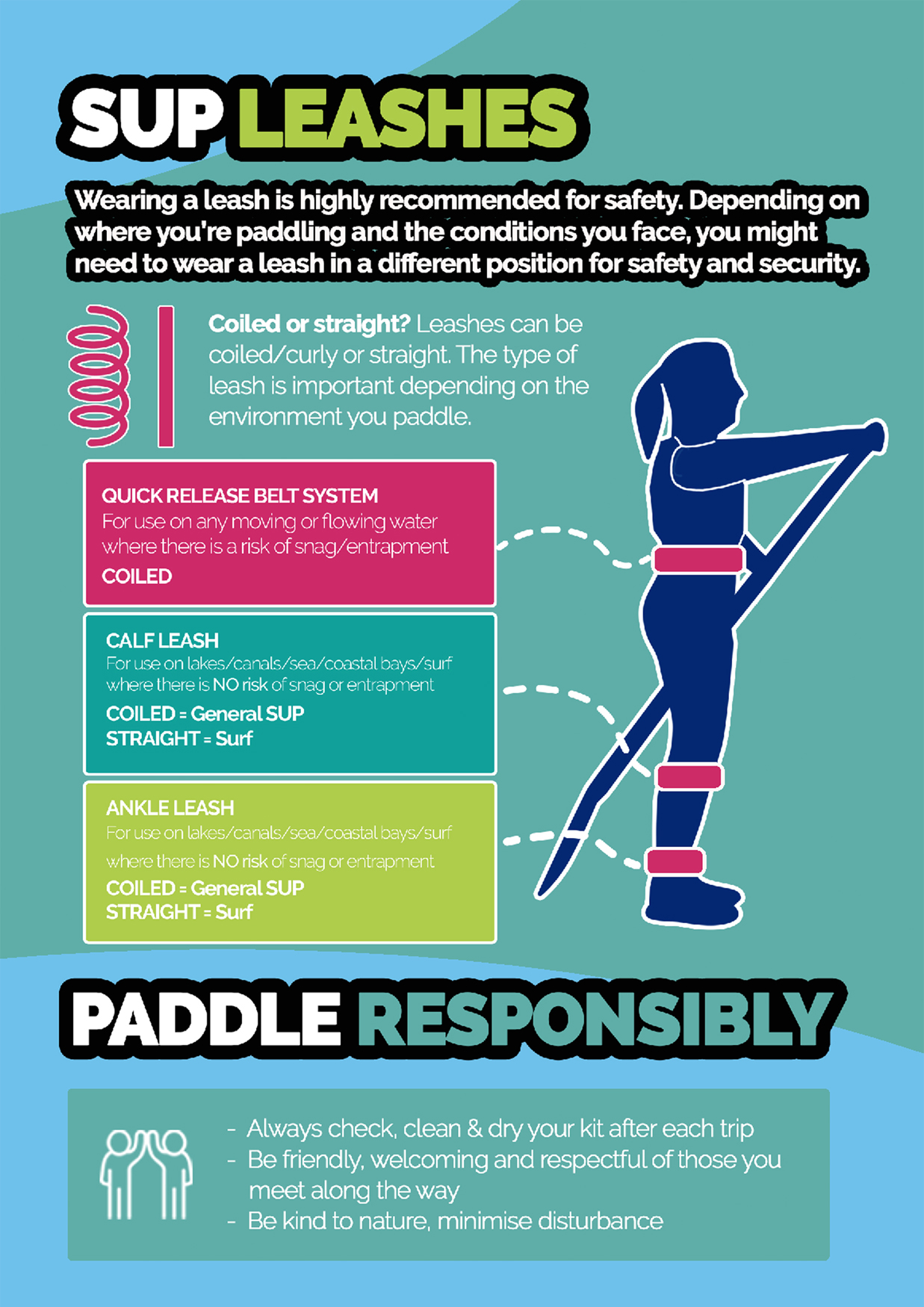Water Safety Advice for Paddle Boards, Kayaks and Boats

Check the weather and tides
Before you plan your adventure, check the weather on the MET Office website and the UKHO / Admiralty Maritime Data Solution for tide times and be aware of offshore winds. We would recommend postponing your adventures during adverse weather conditions.
Tell Someone where you are going
Tell someone on land where you are going and what time you’ll be back. If you can, buddy up and go on your adventures with another person or paddle in a group where possible. The RYA or ISA SafeTrx app can be used to log, track and send alerts about your trip.
Wear a personal floatation device
From lifejackets and vests to buoyancy belts, even the most experienced swimmers should wear a PFD (personal floatation device) whilst on the water at all times. Cold water shock and currents can inhibit your ability to swim or stay afloat.
Always carry a means of calling for help
The easiest option is to carry a mobile phone in a waterproof pouch. If in trouble at sea call 999 and ask for the Coastguard. If you're in trouble inland, ask for the Fire & Rescue service. Other options include a Personal Locator Beacon (PLB) or a Waterproof Handheld Digital Selective Calling (DSC) / Very High Frequency (VHF) radio.
Paddle within your ability
Don't go out of your comfort zone when paddling. If you are unsure, stick to safe bodies of water and calm waters. If your arms are feeling tired or you are struggling to paddle, make your way out of the water. When paddleboarding, get comfortable on the board before attempting to stand up.
Official Paddle Safety & SUP Leash Guidance














